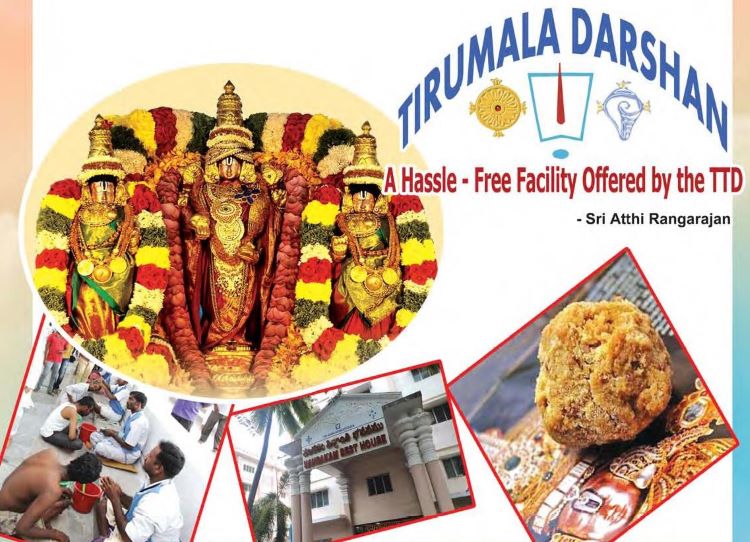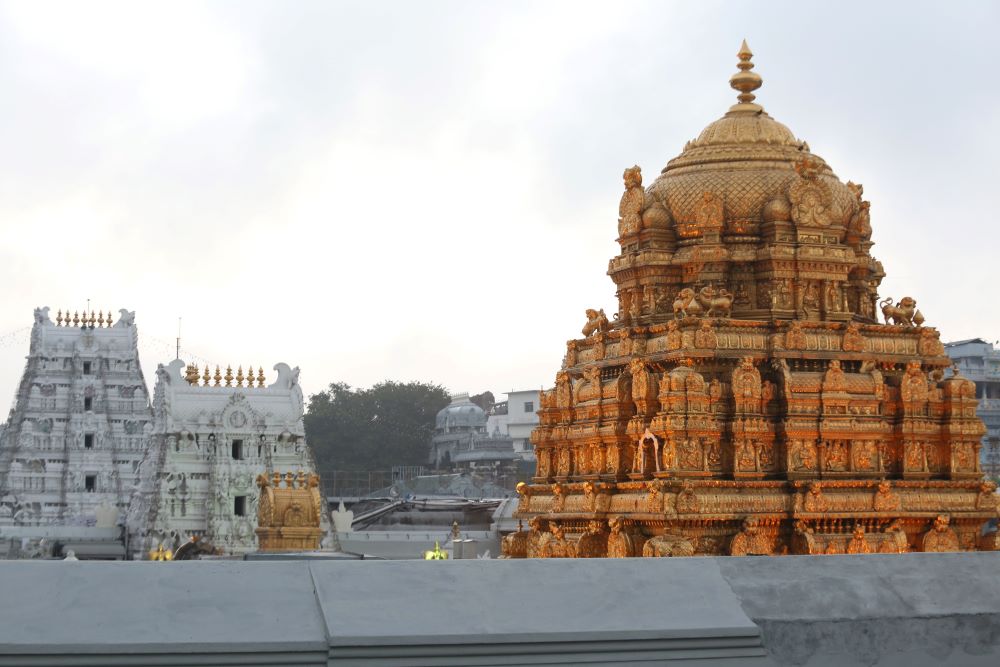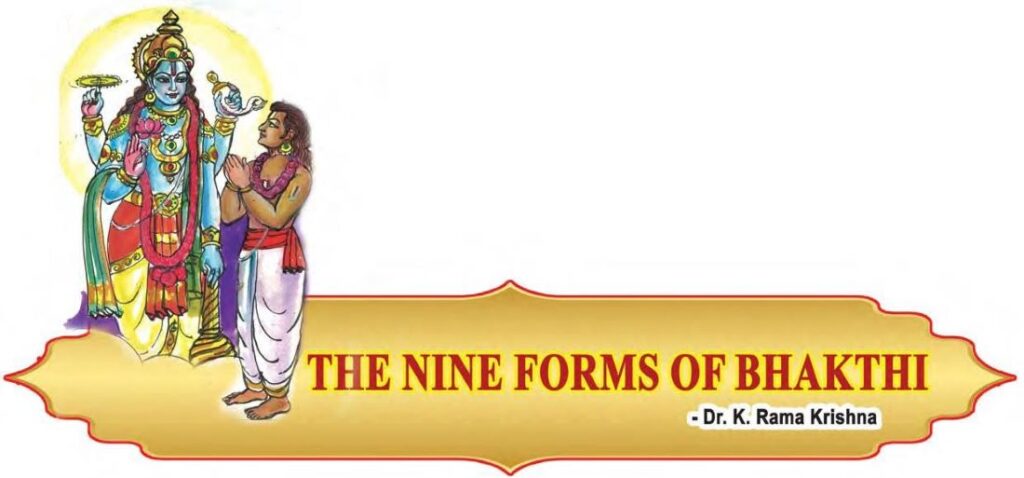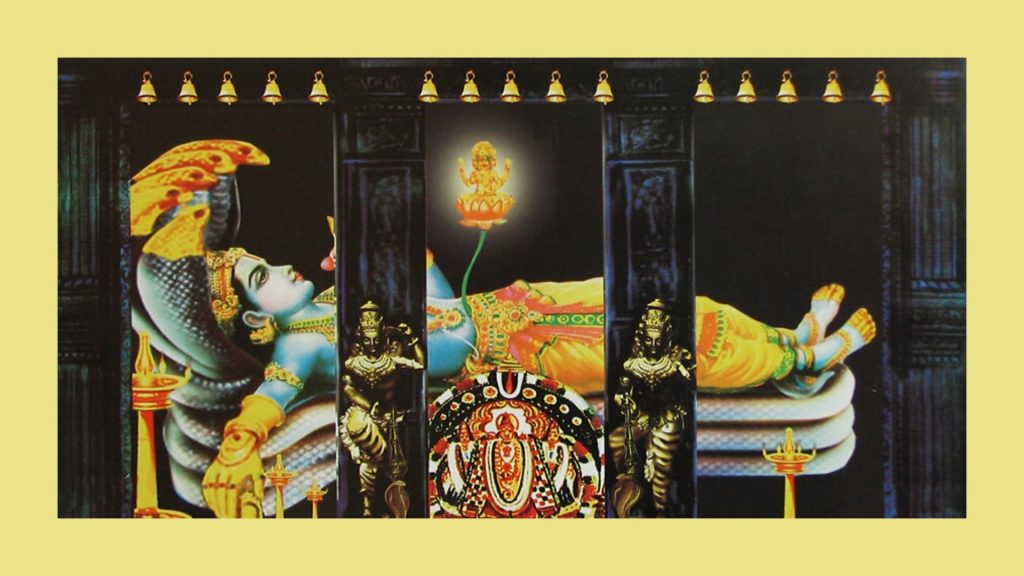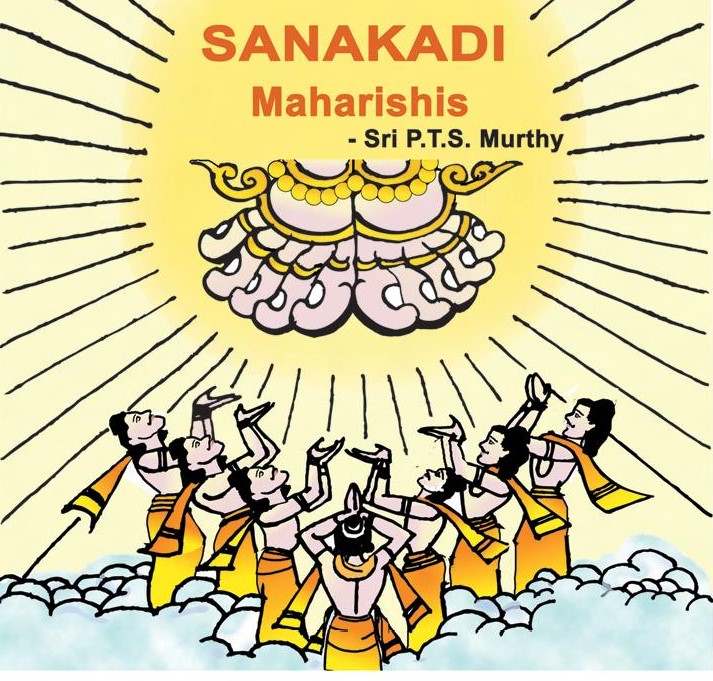Hassle-Free Facilities for Darshan As the saying ‘Manava Sevaye Madhava Seva’ goes, the Tirumala Tirupati Devasthanams (TTD) is committed to providing basic services to the common pilgrim visiting the abode of Sri Venkateswara, including free darshan, food, drinking water, travel and tonsuring. There are numerous facilities offered by TTD for the benefit of pilgrims visiting Read More
Category: Special Articles
Miracles of Lord Venkateswara Swamy – The Presiding Deity of Tirumala
Manifestation of Lord Venkateswara Swamy Shines with Lord Sri Mahavishnu left Vaikuntam and reached Venkatadri as Lord Venkateswara Swamy to protect and bless the devotees. Venkatadri is also known as Venkatachalam. It is one of the seven hills of Tirumala, considered a heavenly abode on the earth. The sanctum sanctorum where Sri Venkateswara Swamy resides Read More
The 9 Forms of Devotion (Comprehensive List)
9 Forms of Devotion Listening, singing, remembering, serving the feet, worshipping, offering obeisance, servitude, friendship, and complete surrender – through these nine paths one can reach God. These are known as the 9 forms of Devotion. A devotee can choose any of these nine paths based on their ability, capacity, and opportunities. Regardless of the Read More
The 9 Forms of Bhakti
9 Forms of Bhakti Listening, singing, remembering, serving the feet, worshipping, offering obeisance, servitude, friendship, and complete surrender – through these nine paths one can reach God. These are known as the 9 forms of Bhakti. A devotee can choose any of these nine paths based on their ability, capacity, and opportunities. Regardless of the Read More
Anantha Padmanabha Vratam
Anantha Padmanabha Vratam – Prosperity, Longevity and Spiritual Upliftment In Hindu philosophy, every day of the month is sacred if life is treated as a symbolic spiritual journey. Of them, Chaviti (4th Day), Panchami (5th Day), Shasti (6th Day), Saptami (7th Day) Astami (8th Day), Navami (9th Day) Dashami (10th Day) Ekadashi (11th Day) Chaturdhasi Read More
Balarama Jayanti 2024: Unveiling the Power of Lord Balarama
Balarama – The Icon of Brotherhood (Eve of Balarama Jayanti) This article talks about Balarama, one of the Dasa Avatharams of Lord Vishnu. On the eve of “Balarama Jayanti,” a humble attempt is made to stress the importance of Lord Balarama’s avatar. Out of all the Dasavatharams of Lord Vishnu, normally he appears as one Read More
Vamana Jayanti 2024 (Significance of Vamana Avatar)
Vamana Jayanti The purpose of Vamana Avatara is to regain Devaloka (Heaven) to Indra from Asura king Maha Bali. Vamana Jayanti on 15.09.2024 The Vamana Purana is one of the eighteen Puranas written by Maharshi Veda Vyas. Sri Vamana is the fifth Avatara (incarnation) of Lord Vishnu. According to legends, Lord Vamana is the twelfth Read More
Significance of Silver (Metal)
Significance of Silver Silver is one of the most widely used precious metals in jewellery. The jewellery made from silver is elegant, classy, long-lasting, and more affordable than other precious metals. Generally Indians like wearing gold ornaments but don’t wear gold ornaments under the waist, as it represents the goddess of wealth and prosperity. Due Read More
Sanakadi Maharishis (4 Kumaras)
Sanakadi Maharishis Sanaka Kumara, Sanatana Kumara, Sanandana Kumara, and Sanat Kumara are collectively called Sanakadi maharishis. They are created by Lord Brahma out of his mind and thoughts. They roam the entire universe in the form of children. Lord Brahma desired that these children would enter into a materialistic world by marrying and creating the Read More
Ganga Aarti (Holy Harathi at River Ganga) – Varanasi
Ganga Aarti The Ganga Aarti in Banaras is amongst the most exquisite religious ceremonies on the planet. It takes place near Kashi Vishwanath Temple in the Ghat Dashashwamedh. The Aarti is held on the stairs at the river’s bank. In honour of the Goddess Ganga, a group of pandits dressed in saffron robes erect massive Read More
